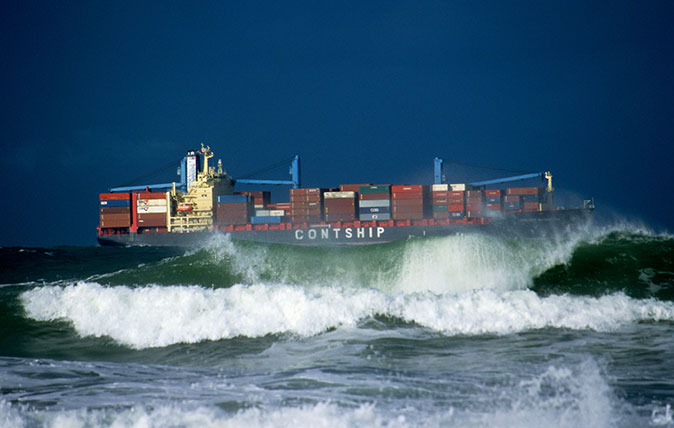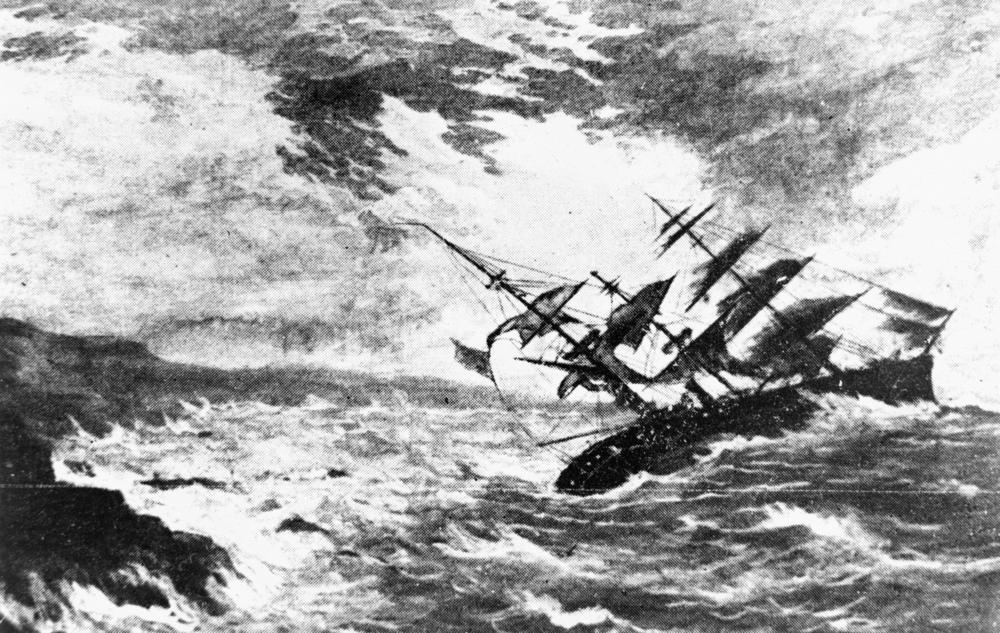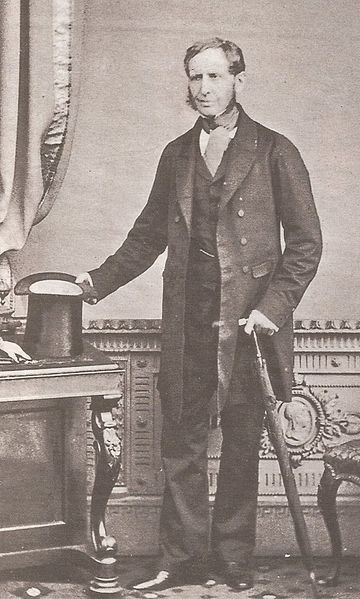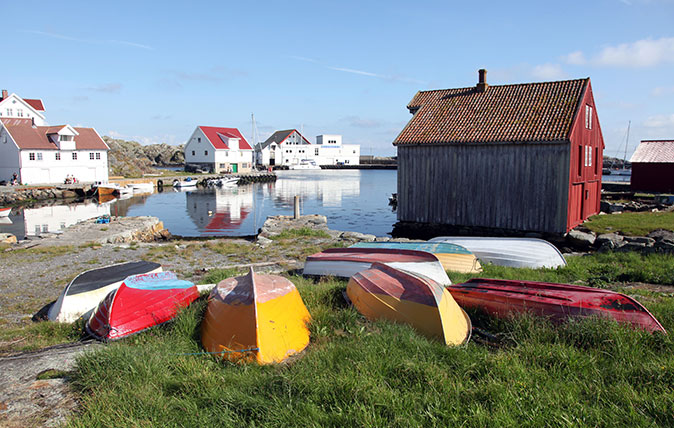10 fascinating things you should know about the Shipping Forecast
From the tragedy which sparked its inception to the modern tweaks which have had listeners up in arms.


- The Shipping Forecast began life exactly 150 years ago, on 24 August 1867, and was originally a series of telegraph messages sent to harbour towns to warn of impending storms. There had been some efforts to predict and warn about incoming weather via scientific means before this – pioneered by Robert FitzRoy (on whom more below) following a catastrophic storm in 1859 that killed 800 mariners off the coast of Wales. Sadly, FitzRoy didn’t live to see his ideas become a permanent fixture of British life: he killed himself in 1865, in part because of his frustration at failing to set up a regular service.

- The Shipping Forecast started up on radio in 1924, when the Air Ministry started broadcasting its weather shipping programme, using 13 maritime zones, twice daily on the Home Service. It was suspended during the Second World War, but was relaunched in 1949.
- There are now 31 zones, which are given out in strict order, beginning at Viking in the north-east bordering Norway, and proceeding in a clockwise direction round the British Isles.
- Only seven areas survive from the original list: Forties, Humber, Dogger, Thames, Wight, Shannon and Hebrides. Minches was absorbed into Hebrides in 1983; North and South Utsire were added in 1984;and, in 2002, Finisterre became FitzRoy (named for pioneering meteorologist Admiral Robert FitzRoy. The change provoked an outcry, but the accolade is justified: FitzRoy was a fascinating figure, captain of HMS Beagle on which Charles Darwin sailed to South America, and the man who made accurate weather forecasting possible – and who started up what has now morphed into the Met Office.

- The 0048 broadcast is preceded by Sailing By, Ronald Binge’s mellow strings arrangement, partly to helpseamen tune in, and it concludes with the National Anthem.
- Good, moderate and poor refer to visibility; veering indicates that the wind is changing in a clockwise direction; backing means anti-clockwise.
- The most severe storm forecast in recent memory was read on January 10, 1993:‘Rockall, Malin, Hebrides, Bailey. South west hurricane force 12 or more.’ Many announcers work for a decade or longer before having to put out an 11 (violent storm) or 12 (gale strength).
- Prime cod-fishing ground, Dogger Bank (its name comes from the Dutch ‘dogger’, or fishing vessel) is a 160-mile long mass of underwater sand dunes, some of which are as tall as Nelson’s Column.
- The dangerous waters around the Farne Islands conceal many wrecks, including the Somali, a steamship bombed in1941. The north and north-east Norfolk coast (Humber/Thames) holds some 225 wrecks, including HMS Umpire, a Second World War submarine lying 65ft deep 12 miles off Blakeney Point.
- More wrecks lie on Goodwin Sands off Kent (near Dover), a 10-mile long series of underwater dunes and banks, a hazard for shipping for centuries. Forty miles north of Anglesey is one of the least accessible wrecks, the steamship Liverpool, sunk by a mine in 1916.

150 years of the Shipping Forecast: The magic and poetry of Dogger, Fisher and German Bight
Sign up for the Country Life Newsletter
Exquisite houses, the beauty of Nature, and how to get the most from your life, straight to your inbox.
Country Life is unlike any other magazine: the only glossy weekly on the newsstand and the only magazine that has been guest-edited by HRH The King not once, but twice. It is a celebration of modern rural life and all its diverse joys and pleasures — that was first published in Queen Victoria's Diamond Jubilee year. Our eclectic mixture of witty and informative content — from the most up-to-date property news and commentary and a coveted glimpse inside some of the UK's best houses and gardens, to gardening, the arts and interior design, written by experts in their field — still cannot be found in print or online, anywhere else.
-
 Some of the finest landscapes in the North of England with a 12-bedroom home attached
Some of the finest landscapes in the North of England with a 12-bedroom home attachedUpper House in Derbyshire shows why the Kinder landscape was worth fighting for.
By James Fisher
-
 The Great Gatsby, pugs and the Mitford sisters: Country Life Quiz of the Day, April 16, 2025
The Great Gatsby, pugs and the Mitford sisters: Country Life Quiz of the Day, April 16, 2025Wednesday's quiz tests your knowledge on literature, National Parks and weird body parts.
By Rosie Paterson
-
 Having a ruff day: Kennel Club exhibition highlights the plight of vulnerable spaniel breeds
Having a ruff day: Kennel Club exhibition highlights the plight of vulnerable spaniel breedsPhotographer Melody Fisher has been travelling the UK taking photographs of ‘vulnerable’ spaniel breeds.
By Annunciata Elwes
-
 'There is nothing like it on this side of Arcadia': Hampshire's Grange Festival is making radical changes ahead of the 2025 country-house opera season
'There is nothing like it on this side of Arcadia': Hampshire's Grange Festival is making radical changes ahead of the 2025 country-house opera seasonBy Annunciata Elwes
-
 Arthur Parkinson: I am a cleaner, security guard and matron to my happy hens
Arthur Parkinson: I am a cleaner, security guard and matron to my happy hensIn his first regular chicken-keeping column for ‘Country Life’, Arthur Parkinson introduces his brood and touches on the importance of good housekeeping.
By Arthur Parkinson
-
 Is anyone more superstitious than a sports star?
Is anyone more superstitious than a sports star?When it comes to worrying about omens and portents, nobody gets quite so worked up as our sportsmen and women.
By Harry Pearson
-
 The humble hazel dormouse — 'the flagship species of the health of our countryside'
The humble hazel dormouse — 'the flagship species of the health of our countryside'The sleepy and very sweet hazel dormouse is one of Britain's rarest mammals.
By Jack Watkins
-
 The grass is always greener: Follow in the footsteps of Sir Andy Murray and play in The Giorgio Armani Tennis Classic
The grass is always greener: Follow in the footsteps of Sir Andy Murray and play in The Giorgio Armani Tennis ClassicThere’s no better time of year than the summer grass court tennis season.
By Rosie Paterson
-
 You've gotta catch them all: Everything you need to know about London's giant Easter egg hunt
You've gotta catch them all: Everything you need to know about London's giant Easter egg huntFortnum & Mason, Anya Hindmarch and Chopard are among the companies that have lent a creative hand.
By Amie Elizabeth White
-
 The UK gets its first ‘European stork village’ — and it's in West Sussex
The UK gets its first ‘European stork village’ — and it's in West SussexAlthough the mortality rate among white storks can be up to 90%, the future looks rosy for breeding pairs in southern England.
By Rosie Paterson